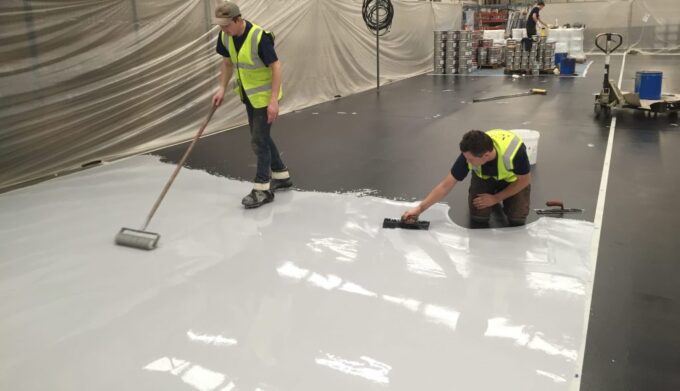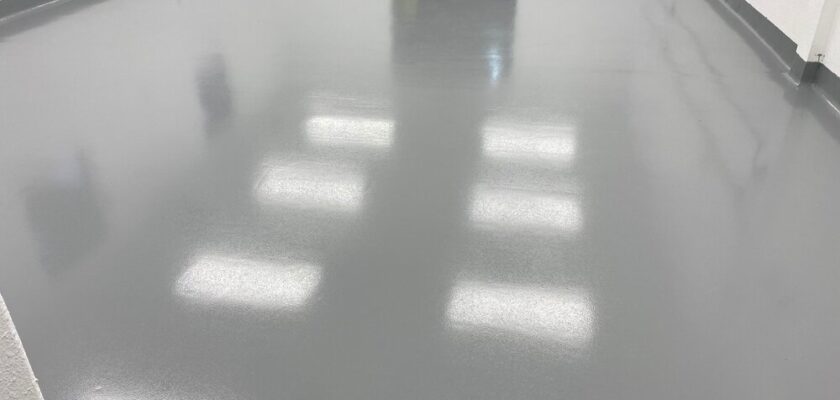Anti-static coatings are specialized coatings that are applied to materials in order to prevent the buildup of static electricity. These coatings are used in a variety of industries, including electronics and automotive manufacturing. In this article, we’ll take a closer look at how anti-static coatings work and some of the most common applications for them.
What are Anti-Static Coatings?

Source:flowcreteasia.com
Anti-static coatings are used in a variety of industries to protect against static discharge. Static discharge can damage sensitive electronic equipment, so it’s important to have a coating that will dissipate the charge quickly.
There are a few different types of anti-static coatings, but the most common is made from acrylic. This type of coating works by creating a barrier between the charged surface and the electronics. The charge is then dissipated through the coating and into the ground.
Other types of anti-static coatings include those made from fluoropolymers and polyurethanes. These coatings work in a similar way to acrylics, but they’re more durable and can provide better protection against static discharge. Anti-static coatings, optically clear version or colorless, are available in different formulations to meet the needs of your specific application.
How Do Anti-Static Coatings Work?
Anti-static coatings work by reducing the surface resistance of a material, making it less likely to build up static electricity. The coatings are typically made from conductive or dissipative materials, which help to dissipate the static charge. In some cases, the coating can be applied as a spray or coating to the surface of the material.
The Benefits of Using an Anti-Static Coating

Source:impactfloors.co.uk
An anti-static coating is a type of coating that helps to prevent static build-up on surfaces. Static build-up can cause problems with electronic equipment and can be dangerous in some situations. Anti-static coatings help to protect against static build-up by providing a conductive surface that will dissipate any static charge that is present.
There are many benefits to using an anti-static coating, especially in environments where static build-up could be a problem. Anti-static coatings can help to extend the life of electronic equipment by preventing damage from static discharge. In some cases, anti-static coatings can also improve the performance of electronic equipment by reducing interference from static charges.
If you are working in an environment where static build-up could be a problem, consider using an anti-static coating on surfaces that come into contact with electronics or sensitive materials.
How to Apply an Anti-Static Coating?

Source:lasercroft.com
When you need to apply an anti-static coating, the process is actually pretty simple. All you need is a clean surface to work with and a can of anti-static spray. Just make sure to follow the directions on the can so that you get the best results.
Once you have a clean surface, just spray on the anti-static coating. You’ll want to make sure that you cover the entire surface evenly. Once you’re done, just let it dry and you’re all set!
Different Types of Anti-Static Coatings

Source:alafiacoatings.com
There are many different types of anti-static coatings available on the market, each with their own unique set of benefits and drawbacks. Here is a quick overview of some of the most popular choices:
- Fluoropolymer coatings: These coatings provide excellent electrical resistance and can be applied to a wide variety of materials, making them a versatile choice for many applications. However, they are typically more expensive than other options and can be difficult to apply evenly.
- Conductive coatings: These coatings are designed to conduct electricity, which makes them an effective choice for protecting against static discharge. However, they can also be used to protect against electromagnetic interference (EMI), so they must be carefully selected for the specific application.
- Metallic coatings: Metallic coatings are often used in applications where high electrical resistance is required, such as in electronic components.
- Polymeric coatings: Polymeric coatings are a versatile option that can be tailored to meet the specific needs of the application. They are typically less expensive than other options and easy to apply, but they may not provide the same level of protection as other choices.
Conclusion
Overall, anti-static coatings are a great way to protect your electronic devices from static electricity. They work by dissipating the static charge before it can cause any damage. There are many different types of anti-static coatings available, so you can choose the one that best suits your needs. Make sure to read the instructions carefully before applying the coating to your device.

